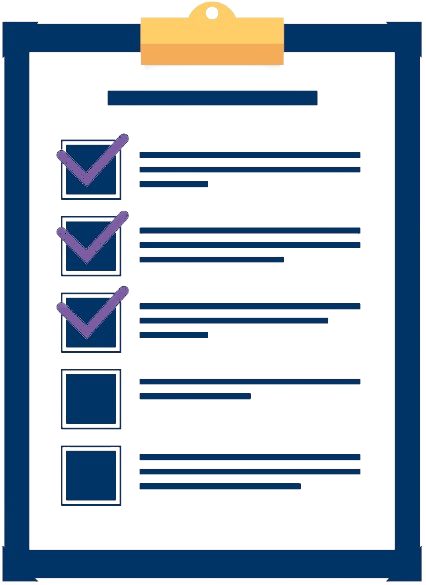Suggestions based on the Question and Answer that you are currently viewing
Assume that as traffic density increases along a given stretch of road, there comes a point when traffic begins to slow down. The following table gives the times taken for a car to travel the stretch of road (in minutes) according to the number of cars entering the road per minute. Cars entering the road 5 6 7 8 9 10 11 Journey time 10 10 11 13 16 22 30 (a) Copy out the table and add the following rows: (i) total journey time for all cars; (ii) extra journey time as traffic increases by one more car (marginal social time cost); (iii) additional time cost imposed on other road users for each additional car entering the road (marginal external time cost). (See Table 13.3 in the text.) (b) Assume that time is valued at 10p per minute. On a graph, plot the marginal private time cost (journey time) and the marginal social time cost. (c) Assume that electronic road pricing is introduced. What charge should be levied when traffic density reaches (i) 6 cars per minute; (ii) 8 cars per minute; (iii) 11 cars per minute? (d) What additional information would you need in order to work out the socially efficient traffic density on this particular stretch of road?
Latrell recently used his Delta Skymiles to purchase a free roundtrip ticket to Milan, Italy (value $1,200). The frequent flyer miles used to purchase the ticket were generated from Latrell’s business travel as a CPA. Latrell’s employer paid for his business trips, and he was not taxed on the travel reimbursement. a. Use an available tax research service to determine how much income, if any, does Latrell have to recognize as a result of purchasing an airline ticket with Skymiles earned from business travel. b. Write a memo communicating the results of your research.
1. Assume that in Table 2.1 the total market demand for potatoes increases by 20 per cent at each price – due, say, to substantial increases in the prices of bread and rice. Plot the old and the new demand curves for potatoes. Is the new curve parallel to the old one? 2. The price of strawberries rises and yet it is observed that the sales of strawberries increase. Does this mean that the demand curve for blueberries is upward sloping? Explain.
1. : Recommend a meeting with the sales representatives entitled to a bonus and tell them that the company’s deteriorating financial situation triggers one of the contingency clauses in their contract so the company won’t be issuing their bonus checks. Tacoma will just have to deal with the negative impact on sales rep motivation.
(a) Assuming no Fair Value Adjustment (available-forsale) account balance at the beginning of the year, prepare the adjusting entry at the end of the year if Laura Company’s available-for-sale securities have a fair value $60,000 below cost. (b) Assume the same information as part (a), except that Laura Company has a debit balance in its Fair Value Adjustment account of $10,000 at the beginning of the year. Prepare the adjusting entry at year-end.
In each of the following independent cases, indicate the amount (1) deductible for AGI, (2) deductible from AGI, and (3) neither deductible for nor deductible from AGI before considering income limitations or the standard deduction.
Describe spinning and laddering in the IPO market. How do you think these actions influence the price of a newly issued stock? Who is adversely affected as a result of these actions? (LO3)
Explain each of the following terms: authorized ordinary shares, unissued ordinary shares, issued ordinary shares, outstanding ordinary shares, and treasury shares
What three characteristics must a strategic move have if it is to be successful in altering the behaviour of a competitor later in the game.
Using the information provided in BE4-2, prepare a condensed multiple-step income statement for Brisky Corporation.
How are qualified distributions from Roth IRAs taxed? How are nonqualified distributions taxed?
What are the relative advantages and disadvantages to a developing country of rescheduling its debts compared with simply defaulting on them (either temporarily or permanently)?
1. : Meet with Pate and the employee to try to resolve the current issue, and then start working with Miranda and other senior managers to develop stronger policies regarding sexual harassment and treatment of employees, including clear-cut procedures for handling complaints.
Coldwell, Inc. issued a $100,000, 4-year, 10% note at face value to Flint Hills Bank on January 1, 2014, and received $100,000 cash. The note requires annual interest payments each December 31. Prepare Coldwell’s journal entries to record (a) the issuance of the note and (b) the December 31 interest payment.
Cuevas Co. is in the process of developing a revolutionary new product. A new division of the company was formed to develop, manufacture, and market this new product. As of year-end (December 31, 2014), the new product has not been manufactured for resale. However, a prototype unit was built and is in operation. Throughout 2014, the new division incurred certain costs. These costs include design and engineering studies, prototype manufacturing costs, administrative expenses (including salaries of administrative personnel), and market research costs. In addition, approximately $900,000 in equipment (with an estimated useful life of 10 years) was purchased for use in developing and manufacturing the new product. Approximately $315,000 of this equipment was built specifically for the design development of the new product. The remaining $585,000 of equipment was used to manufacture the pre-production prototype and will be used to manufacture the new product once it is in commercial production. Instructions (a) How are “research” and “development” defined in the authoritative literature (GAAP)? (b) Briefly indicate the practical and conceptual reasons for the conclusion reached by the FinancialAccounting Standards Board on accounting and reporting practices for research and development costs. (c) In accordance with GAAP, how should the various costs of Cuevas described above be recorded on the financial statements for the year ended December 31, 2014?
Explain how the Fed uses the ample reserves framework to reduce the money supply. (LO2)
For what reasons may the natural rate of unemployment increase?
Describe in general how the cash method of accounting differs from the accrual method.
Presented below are a number of independent situations. Instructions For each individual situation, determine the amount that should be reported as cash. If the item(s) is not reported as cash, explain the rationale. 1. Checking account balance $925,000; certificate of deposit $1,400,000; cash advance to subsidiary of $980,000; utility deposit paid to gas company $180. 2. Checking account balance $600,000; an overdraft in special checking account at same bank as normal checking account of $17,000; cash held in a bond sinking fund $200,000; petty cash fund $300; coins and currency on hand $1,350. 3. Checking account balance $590,000; postdated check from customer $11,000; cash restricted due to maintaining compensating balance requirement of $100,000; certified check from customer $9,800; postage stamps on hand $620. 4. Checking account balance at bank $37,000; money market balance at mutual fund (has checking privileges) $48,000; NSF check received from customer $800. 5. Checking account balance $700,000; cash restricted for future plant expansion $500,000; short-term Treasury bills $180,000; cash advance received from customer $900 (not included in checking account balance); cash advance of $7,000 to company executive, payable on demand; refundable deposit of $26,000 paid to federal government to guarantee performance on construction contract.
Waters Corporation purchased Johnson Company 3 years ago and at that time recorded goodwill of $400,000. The Johnson Division’s net assets, including the goodwill, have a carrying amount of $800,000. The fair value of the division is estimated to be $1,000,000. Prepare Waters’ journal entry, if necessary, to record impairment of the goodwill.
Bandung Corporation began 2014 with a $92,000 balance in the Deferred Tax Liability account. At the end of 2014, the related cumulative temporary difference amounts to $350,000, and it will reverse evenly over the next 2 years. Pretax accounting income for 2014 is $525,000, the tax rate for all years is 40%, and taxable income for 2014 is $405,000. Instructions (a) Compute income taxes payable for 2014. (b) Prepare the journal entry to record income tax expense, deferred income taxes, and income taxes payable for 2014. (c) Prepare the income tax expense section of the income statement for 2014 beginning with the line “Income before income taxes.”
Should all developing countries aim over the long term to become exporters of manufactured products?
On January 1, 2014, Norma Smith and Grant Wood formed a computersales and service company in Soapsville, Arkansas, by investing $90,000 cash. The new company,Arkansas Sales and Service, has the following transactions during January. 1. Pays $6,000 in advance for 3 months’ rent of office, showroom, and repair space. 2. Purchases 40 personal computers at a cost of $1,500 each, 6 graphics computers at a cost of $2,500 each, and 25 printers at a cost of $300 each, paying cash upon delivery. 3. Sales, repair, and office employees earn $12,600 in salaries and wages during January, of which $3,000 was still payable at the end of January. 4. Sells 30 personal computers at $2,550 each, 4 graphics computers for $3,600 each, and 15 printers for $500 each; $75,000 is received in cash in January, and $23,400 is sold on a deferred payment basis. 5. Other operating expenses of $8,400 are incurred and paid for during January; $2,000 of incurred expenses are payable at January 31. Instructions (a) Using the transaction data above, prepare (1) a cash-basis income statement and (2) an accrual-basis income statement for the month of January. (b) Using the transaction data above, prepare (1) a cash-basis balance sheet and (2) an accrual-basis balance sheet as of January 31, 2014. (c) Identify the items in the cash-basis financial statements that make cash-basis accounting inconsistent with the theory underlying the elements of financial statements.
What are the limitations on the number and type of shareholders an S corporation may have? How are these limitations different from restrictions on the number and type of shareholders C corporations or partnerships may have?
Using the same information as in E14-22 and , answer the following questions related to American Bank (creditor). Instructions (a) Compute the loss American Bank will suffer under this new term modification. Prepare the journal entry to record the loss on American’s books. (b) Prepare the interest receipt schedule for American Bank after the debt restructuring. (c) Prepare the interest receipt entry for American Bank on December 31, 2015, 2016, and 2017. (d) What entry should American Bank make on January 1, 2018?
The benefits of buying with AnswerDone:

Access to High-Quality Documents
Our platform features a wide range of meticulously curated documents, from solved assignments and research papers to detailed study guides. Each document is reviewed to ensure it meets our high standards, giving you access to reliable and high-quality resources.

Easy and Secure Transactions
We prioritize your security. Our platform uses advanced encryption technology to protect your personal and financial information. Buying with AnswerDone means you can make transactions with confidence, knowing that your data is secure

Instant Access
Once you make a purchase, you’ll have immediate access to your documents. No waiting periods or delays—just instant delivery of the resources you need to succeed.
